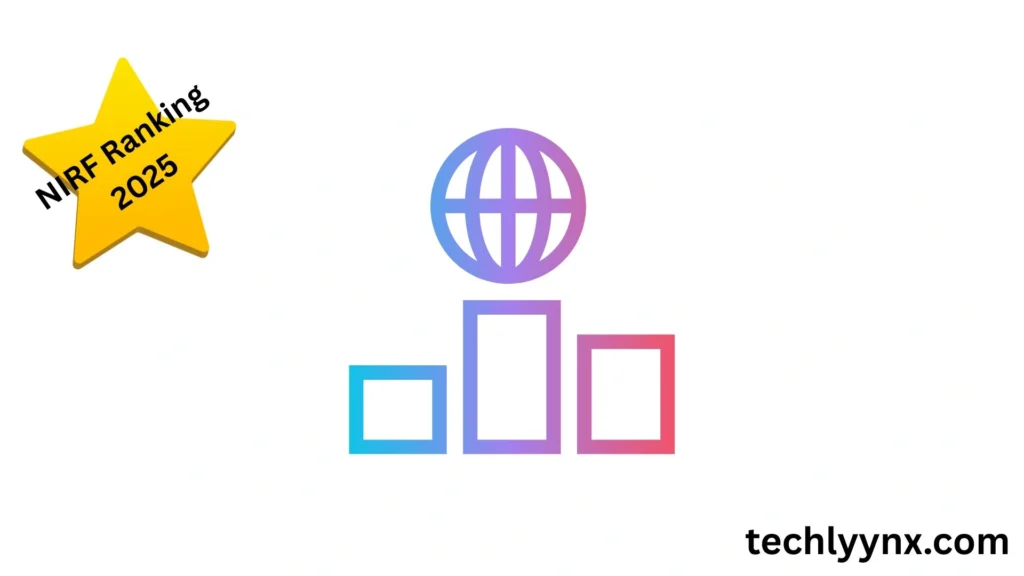Every year, the NIRF Ranking (National Institutional Ranking Framework) in India generates interest, curiosity, and controversy among students, parents, and academic institutions. However, the NIRF Ranking 2025 has surprised everyone with outcomes that few expected. Universities that were once at the top of the rankings have fallen, while others have risen unexpectedly.
NIRF: Everything You Need to Know About It
For students planning their future, these rankings are important because they illustrate the changing environment of higher education in India. In 2025, the surprises were so significant that even education specialists were left discussing what these findings meant for the future of Indian academics.
What is the NIRF Ranking?
The Ministry of Education launched the National Institutional Ranking Framework (NIRF) in 2015. It evaluates Indian colleges and institutions using characteristics such as:
- Teaching, Learning, and Resources (TLR): How well does the university deliver quality education, infrastructure, and faculty?
- Research and Professional Practices (RP) are the institution’s contributions to new knowledge, patents, and innovation.
- Graduation Outcomes (GO) include placement records, student success, and chances for higher education.
- Outreach and Inclusivity (OI): Accessibility for women, students with disabilities, and regional inclusivity.
- Perception (PR) refers to one’s reputation among employers, peers, and the general public.
This grading system is regarded as one of the most dependable indices of institutional excellence in India. It not only assists students in selecting the best college, but it also encourages institutions to continuously improve.
NIRF Ranking 2025
The NIRF Ranking 2025 defied long-standing conventions. Institutions that were previously unbeatable find themselves falling down the rankings. Meanwhile, some universities who were not even in the top 50 last year have made surprising gains.
This movement is primarily due to three trends:
Institutions that specialize on AI, sustainability, biotech, and green energy are gaining international attention.
Government Push for Inclusivity: Colleges in smaller states have won recognition for providing possibilities for impoverished students.
Industry-Academia Partnerships: Universities that collaborated with corporations in IT, healthcare, and manufacturing experienced an increase in placements, which improved their rankings.
Key Highlights from the NIRF Ranking 2025

IITs lose some ground.
While IITs continue to dominate, not all of them rank in the top ten this year. Some showed a decline due to lower inclusion scores and poorer global collaborations.
- Private universities are on the rise Private colleges such as Ashoka University, Amity, and Shiv Nadar surprised many by rising up the rankings due to research funding and international student intake.
- Regional Universities Move Forward Universities in Odisha, Punjab, and Tamil Nadu have jumped ahead. Their emphasis on inexpensive education, women’s empowerment, and local research projects strengthened their positions.
- Law, Medical, and Emerging Fields Receive Recognition.
- NIRF 2025 gave more weight to specialized institutions. Law schools like NLU Delhi and NALSAR, and medical colleges from outside metro cities, gained significant visibility.
Top 10 Institutions
| Rank | Institution | Category | Key Highlight |
|---|---|---|---|
| 1 | IIT Madras | Engineering | Maintained research dominance |
| 2 | IISc Bangalore | Overall | Global patents and AI research |
| 3 | IIT Delhi | Engineering | Industry partnerships |
| 4 | IIT Bombay | Overall | Strong global collaborations |
| 5 | AIIMS Delhi | Medical | Healthcare innovation |
| 6 | Ashoka University | Overall | Private university breakthrough |
| 7 | IIT Kanpur | Engineering | Tech incubators |
| 8 | NLU Delhi | Law | Legal research excellence |
| 9 | JNU Delhi | Overall | Inclusivity and diversity |
| 10 | Shiv Nadar University | Overall | Private sector rise |
(Note: This is an illustrative example – not the official NIRF list.)
Why Students Should Care About
For students, the NIRF Ranking 2025 is more than just numbers; it’s a guide to make informed decisions. Rankings show which institutions are innovative, globally connected, and student-centered. They also show:
Where are the best research facilities?
Which institutions provide the best placement opportunities?
How accessible and diverse a university setting is.
Which colleges provide more worldwide exposure?
Controversies Around
Every ranking sparks controversy, and this year is no exception. Some critics say that too much focus was placed on research productivity, thereby excluding universities with high teaching quality. Others questioned the transparency of perception scores.
Nonetheless, the NIRF remains the most accepted standard since it encourages colleges to continually grow.
Lessons for Institutions
The NIRF Ranking 2025 carries clear lessons for Indian higher education:
- Reputation alone won’t work – consistent innovation is key.
- Inclusivity matters – universities focusing on equal access are rewarded.
- Global linkages boost scores – international collaborations are critical.
- Student outcomes drive success – placements, career growth, and alumni performance weigh heavily.
Looking Ahead
The shocks of the NIRF Ranking 2025 serve as a reminder that Indian higher education is rapidly transforming. Smaller colleges and private players are no longer considered outsiders; they compete directly with established heavyweights.
For students, this translates to more chances and better options. It serves as a signal to institutions: adjust to shifting expectations or risk falling behind the competition.
Conclusion
The NIRF Ranking 2025 has changed India’s educational landscape with amazing and unanticipated effects. It has demonstrated that innovation, diversity, and a global perspective are now more essential than legacy.
While rankings change from year to year, the ultimate goal remains the same: to provide children with a high-quality education that prepares them for their future. In this sense, each change to the list represents a step forward.

